Abstract
Because of the emergence of drug-resistant Klebsiella strains in many hospitals, the distribution of the serotypes was reexamined to determine whether there was any correlation between the serotype and the site of isolation from the body, the antimicrobial susceptibility pattern, or the place of acquisition of the organism (hospital or community). One hundred consecutive isolates of Klebsiella pneumoniae from different patients were typed as 1, 2, 3, 4, 5, 6, or greater than 6. Of these, 8 of 28 strains isolated from respiratory secretions were serotype 2 (9 typable strains), 6 of 24 wound isolates were serotype 3 (8 typable strains), and the urine isolates varied in their serotypes. Regardless of serotype, most strains appeared mucoid on blood and MacConkey agars. Twenty-six percent of the isolates were resistant to at least one antimicrobial agent. No correlation was found between the serotypes and the antibiotic resistance; however, strains isolated within 25 days of admission to the hospital from the community were all susceptible. It appears that although there may be a correlation between the serotype and isolation from some sites of the body, knowledge of the serotype of the organism cannot predict the antimicrobial susceptibility pattern. The clinician's choice of antibiotic therapy should depend largely on whether the Klebsiella strain was acquired by the patient in the community (0% resistant) or in the hospital (31% resistant).
Full text
PDF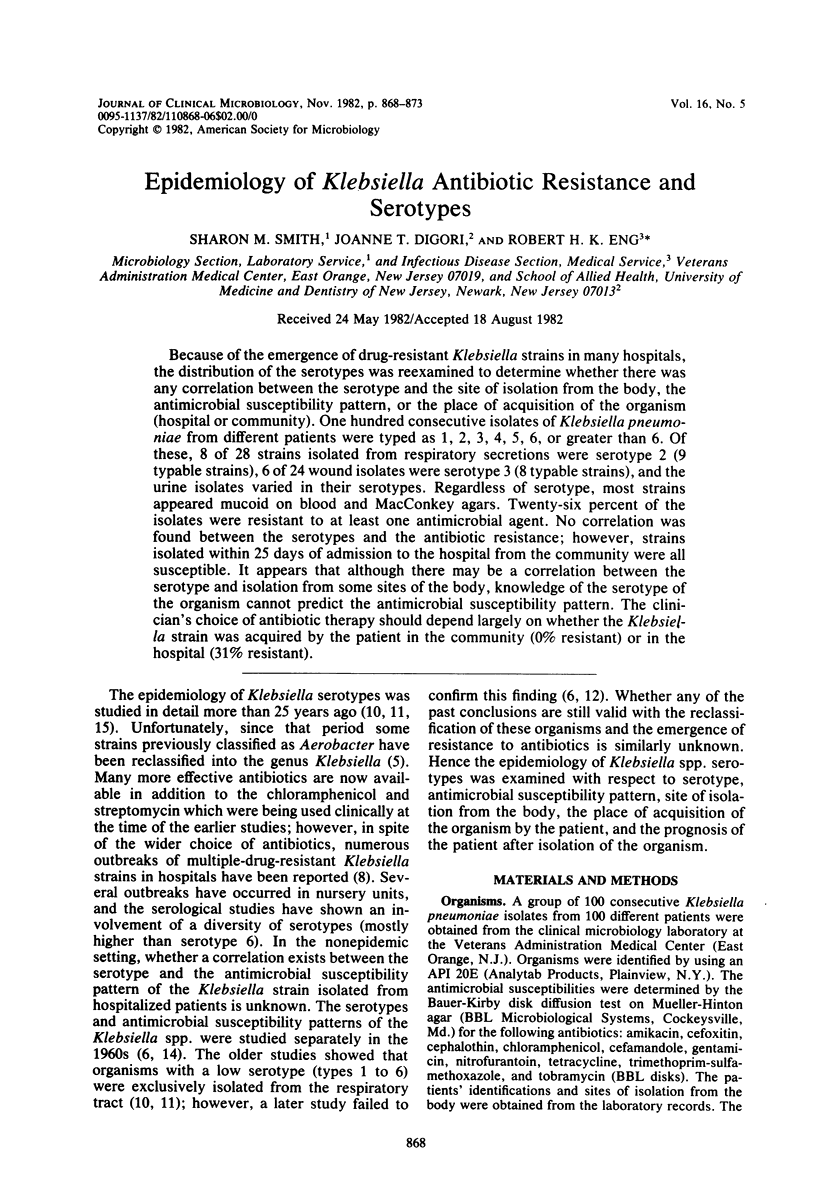
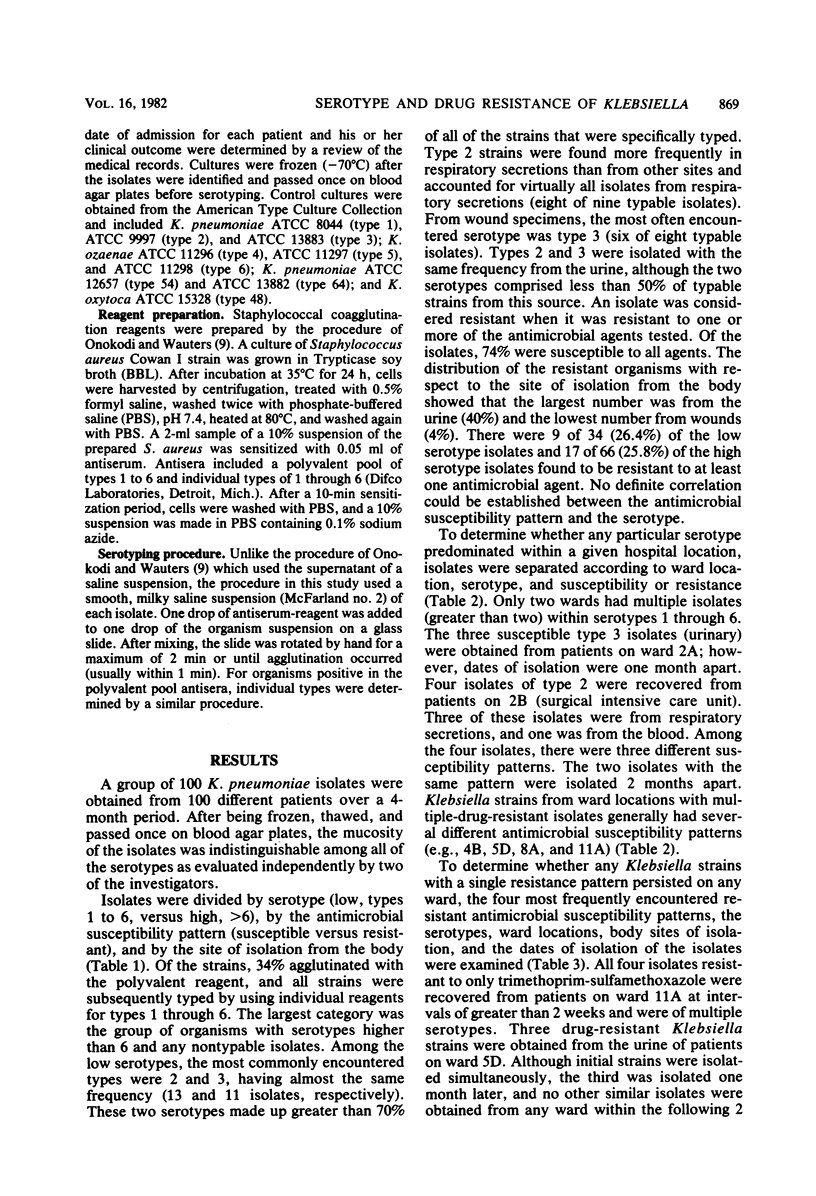
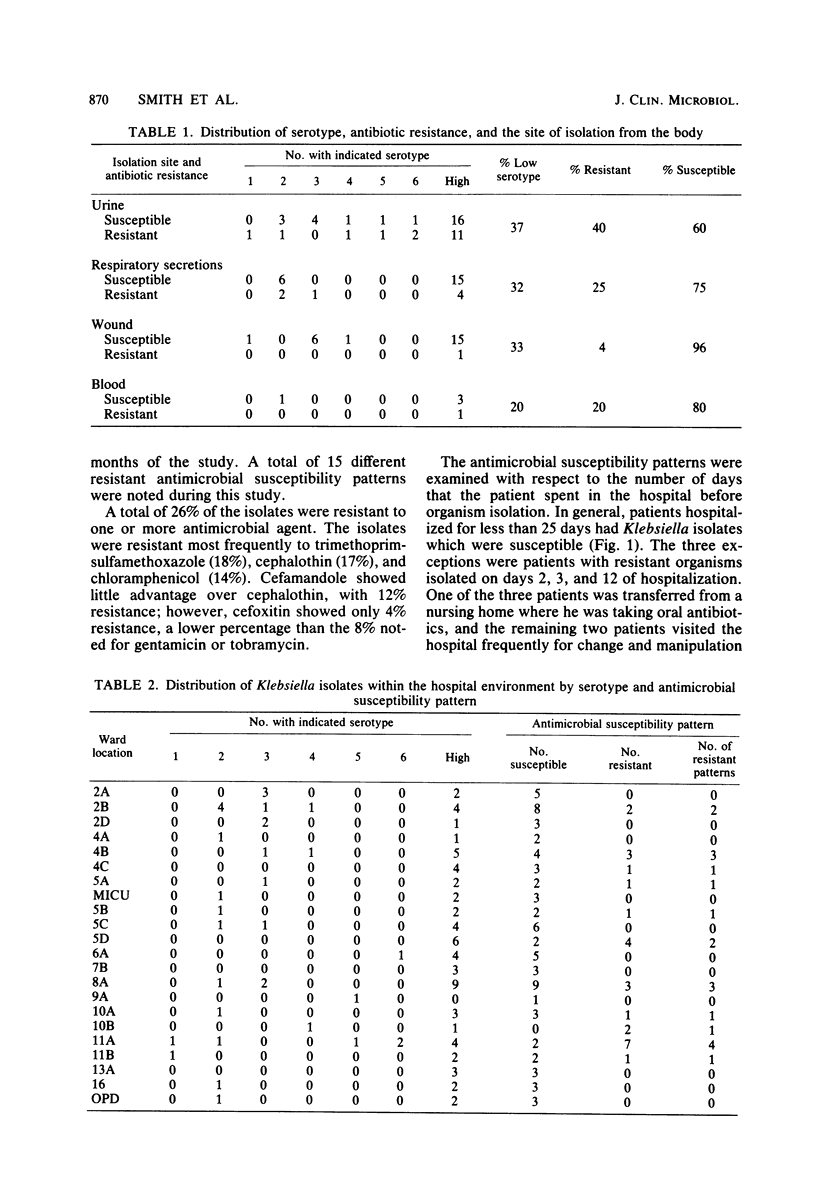
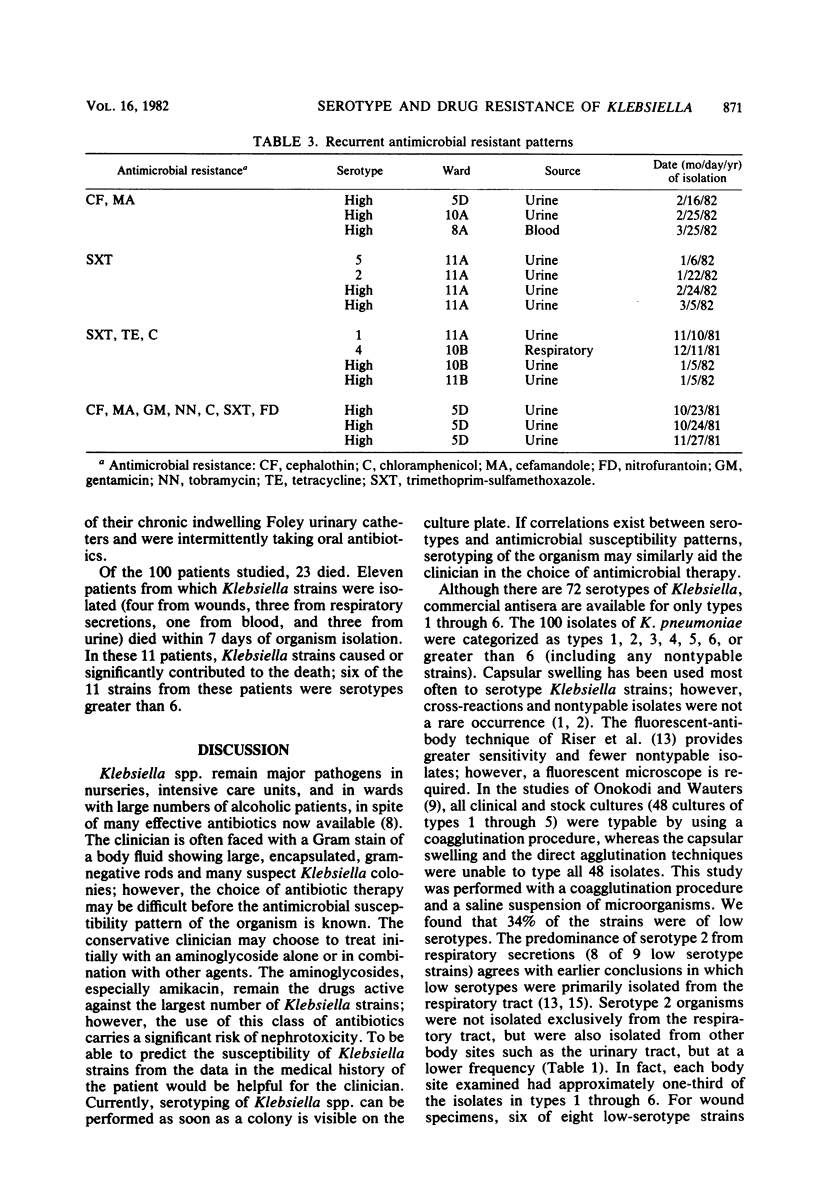
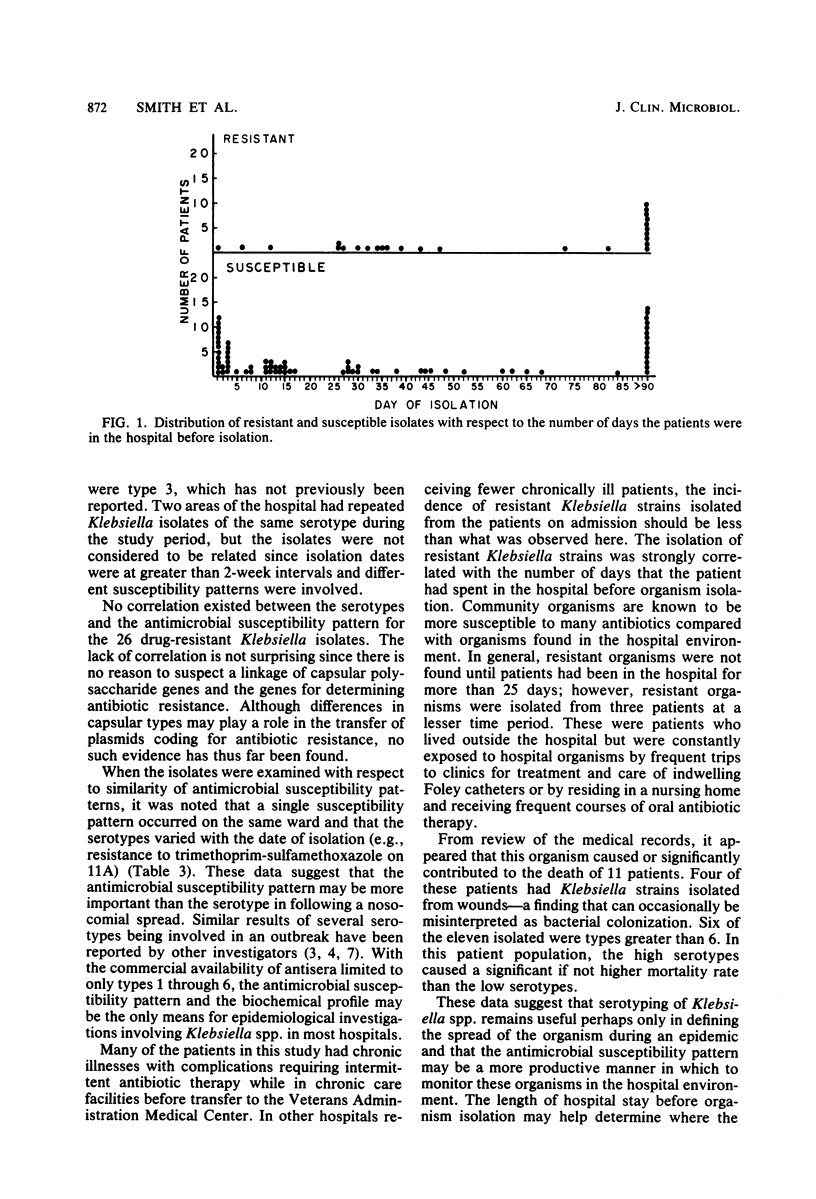
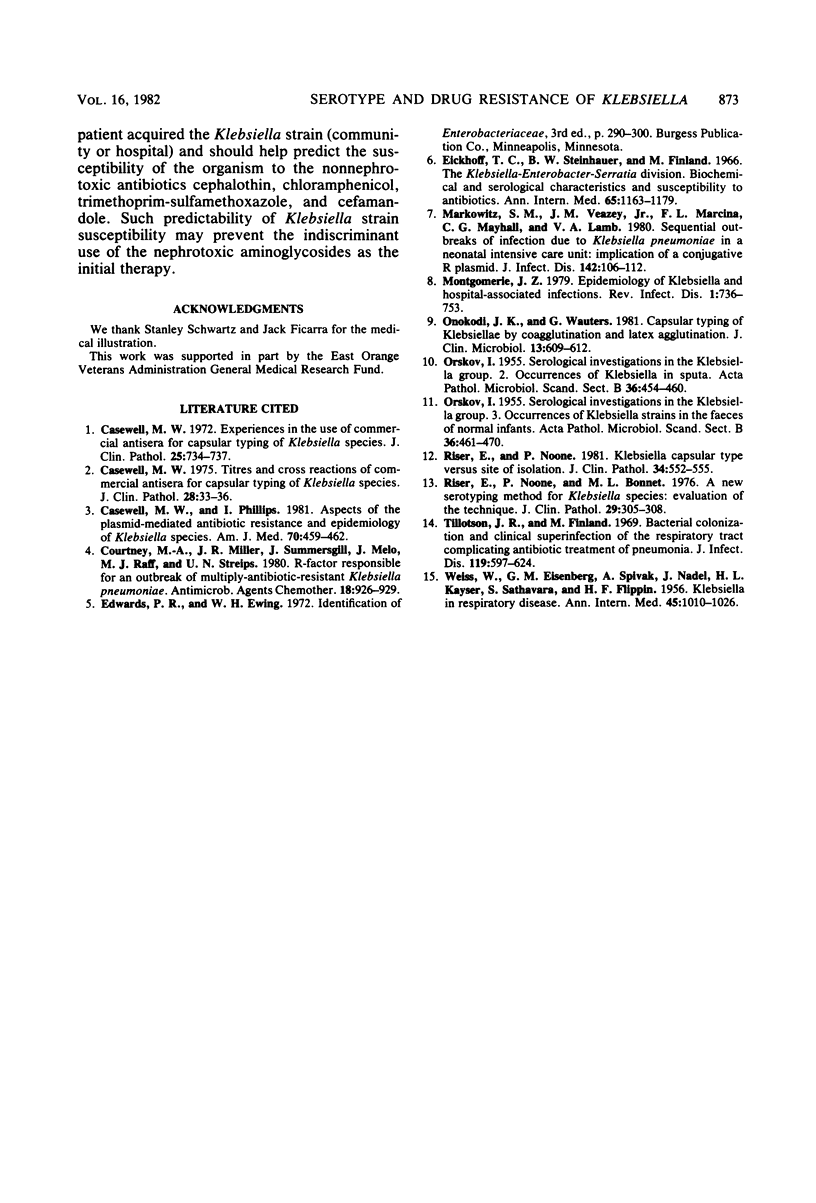
Selected References
These references are in PubMed. This may not be the complete list of references from this article.
- Casewell M. W. Experiences in the use of commercial antisera for the capsular typing of klebsiella species. J Clin Pathol. 1972 Aug;25(8):734–737. doi: 10.1136/jcp.25.8.734. [DOI] [PMC free article] [PubMed] [Google Scholar]
- Casewell M. W., Phillips I. Aspects of the plasmid-mediated antibiotic resistance and epidemiology of Klebsiella species. Am J Med. 1981 Feb;70(2):459–462. doi: 10.1016/0002-9343(81)90788-9. [DOI] [PubMed] [Google Scholar]
- Casewell M. W. Titres and cross reactions of commercial antisera for the capsular typing of Klebsiella species. J Clin Pathol. 1975 Jan;28(1):33–36. doi: 10.1136/jcp.28.1.33. [DOI] [PMC free article] [PubMed] [Google Scholar]
- Courtney M. A., Miller J. R., Summersgill J., Melo J., Raff M. J., Streips U. N. R-factor responsible for an outbreak of multiply antibiotic-resistant Klebsiella pneumoniae. Antimicrob Agents Chemother. 1980 Dec;18(6):926–929. doi: 10.1128/aac.18.6.926. [DOI] [PMC free article] [PubMed] [Google Scholar]
- EISENBERG G. M., FLIPPIN H. F., KAYSER H. L., NADEL J., SATHAVARA S., SPIVACK A., WEISS W. Klebsiella in respiratory disease. Ann Intern Med. 1956 Dec;45(6):1010–1026. doi: 10.7326/0003-4819-45-6-1010. [DOI] [PubMed] [Google Scholar]
- Eickhoff T. C., Steinhauer B. W., Finland M. The Klebsiella-Enterobacter-Serratia division. Biochemical and serologic characteristics and susceptibility to antibiotics. Ann Intern Med. 1966 Dec;65(6):1163–1179. doi: 10.7326/0003-4819-65-6-1163. [DOI] [PubMed] [Google Scholar]
- Markowitz S. M., Veazey J. M., Jr, Macrina F. L., Mayhall C. G., Lamb V. A. Sequential outbreaks of infection due to Klebsiella pneumoniae in a neonatal intensive care unit: implication of a conjugative R plasmid. J Infect Dis. 1980 Jul;142(1):106–112. doi: 10.1093/infdis/142.1.106. [DOI] [PubMed] [Google Scholar]
- Montgomerie J. Z. Epidemiology of Klebsiella and hospital-associated infections. Rev Infect Dis. 1979 Sep-Oct;1(5):736–753. doi: 10.1093/clinids/1.5.736. [DOI] [PubMed] [Google Scholar]
- Onokodi J. K., Wauters G. Capsular typing of klebsiellae by coagglutination and latex agglutination. J Clin Microbiol. 1981 Apr;13(4):609–612. doi: 10.1128/jcm.13.4.609-612.1981. [DOI] [PMC free article] [PubMed] [Google Scholar]
- Riser E., Noone P., Bonnet M. L. A new serotyping method for Klebsiella species: evaluation of the technique. J Clin Pathol. 1976 Apr;29(4):305–308. doi: 10.1136/jcp.29.4.305. [DOI] [PMC free article] [PubMed] [Google Scholar]
- Riser E., Noone P. Klebsiella capsular type versus site of isolation. J Clin Pathol. 1981 May;34(5):552–555. doi: 10.1136/jcp.34.5.552. [DOI] [PMC free article] [PubMed] [Google Scholar]
- Tillotson J. R., Finland M. Bacterial colonization and clinical superinfection of the respiratory tract complicating antibiotic treatment of pneumonia. J Infect Dis. 1969 Jun;119(6):597–624. doi: 10.1093/infdis/119.6.597. [DOI] [PubMed] [Google Scholar]
- ØRSKOV I. Serological investigations in the Klebsiella group. II. Occurrence of Klebsiella in sputa. Acta Pathol Microbiol Scand. 1955;36(5):454–460. doi: 10.1111/j.1699-0463.1955.tb04641.x. [DOI] [PubMed] [Google Scholar]
- ØRSKOV I. Serological investigations in the Klebsiella group. III. Occurrence of Klebsiella strains in the faeces of normal infants. Acta Pathol Microbiol Scand. 1955;36(5):461–470. [PubMed] [Google Scholar]


